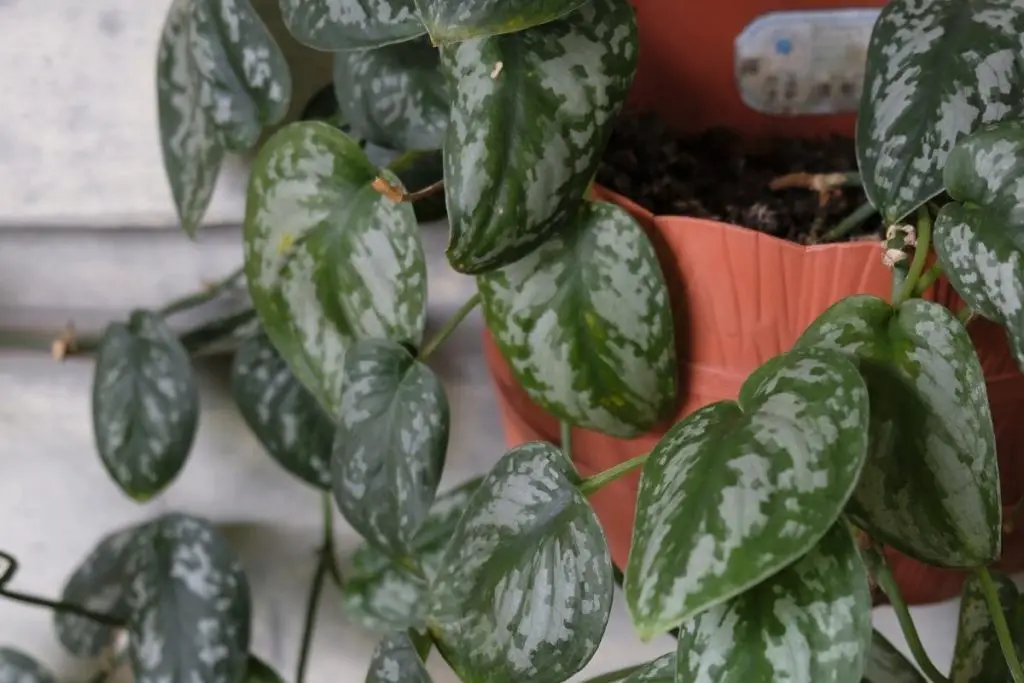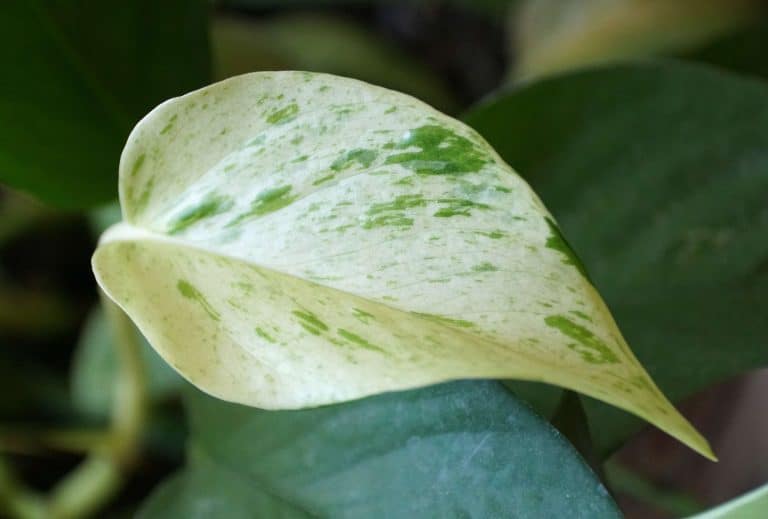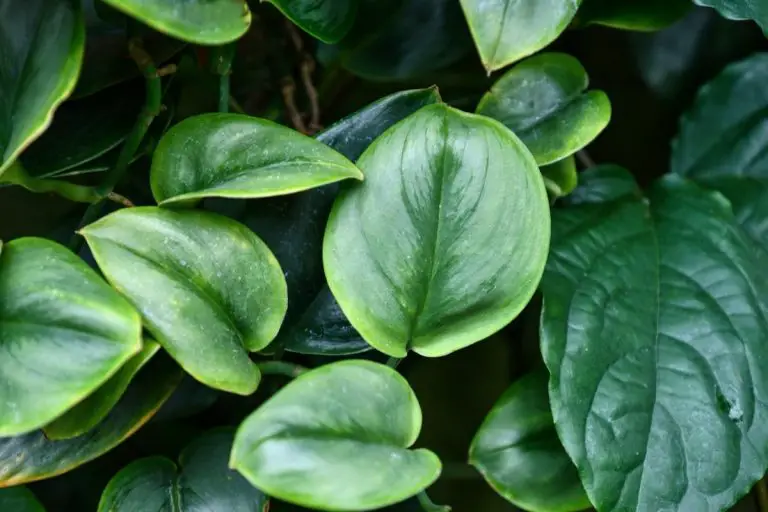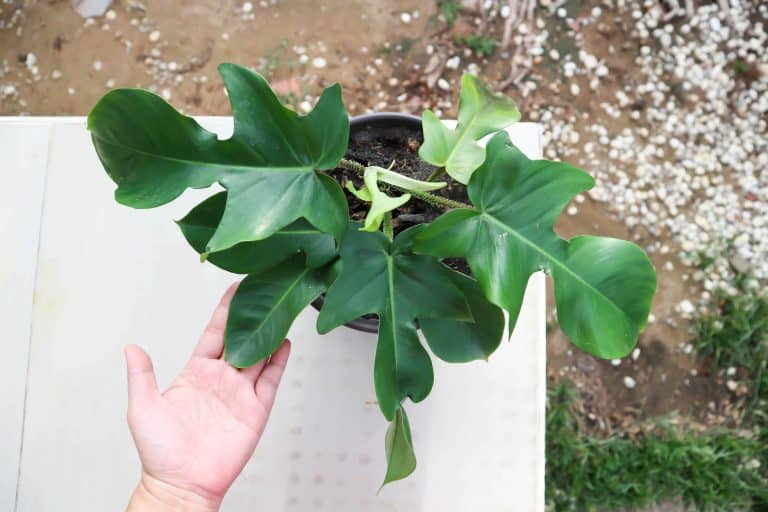Scindapsus Pictus Exotica – Complete Growing Guide
Scindapsus pictus exotica, as the name suggests, is an exotic flowering climbing plant that is both popular in hanging baskets and pots.
If you’re curious to learn more about Scindapsus pictus exotica, then look no further.
In this article, I will provide you with some important information about Scindapsus pictus exotica, including an overview of the plant as well as a care guide. So, should you begin growing this plant, you’re more equipped to take care of it.
Let’s get into it.
DISCLAIMER
Some of the links on here are affiliate links and I may earn if you click on them, AT NO EXTRA cost to you. Hope you find the information here useful! Thanks.
Related Articles:
- Crassula Arborescens (Silver Dollar) – The Complete Care Guide
- Scindapsus Pictus Argyraeus (Silver Pothos) – Care Tips
- Scindapsus pictus (Satin Pothos) – How To Grow a Healthy Indoor Plant
- How To Prevent Weeds In Flower Beds?
- Philodendron Hederaceum – Heartleaf Philodendron Care Guide
- Philodendron Gloriosum – Simple Care Guide

Scindapsus pictus Exotica Overview
Known as a flowering climbing plant, the species name ‘pictus’ means painted and refers to the distinctive patterns on the leaves of this exotic plant.
There are a variety of different ways to grow this type of plant indoors. While many people choose to grow it in pots, others choose to grow this stunning exotic plant inside hanging baskets.

Despite the fact this is a tropical plant, Scindapsus pictus exotica adapts well to being grown indoors. That being said, many people opt to grow them in their bathrooms, as you will need to ensure that the environment isn’t too dry for them as they require humidity of at least 50% to thrive.
Scindapsus pictus Exotica Care Guide
Soil
This plant grows best in fertile, well-draining soil. Ideally, you should grow this plant in indoor potting soil that contains peat moss, pine bark, as well as perlite.
It’s absolutely essential that you don’t oversaturate the soil that this plant grows in, as it will suffer in soggy soil. This is where the perlite comes into use, as it allows any excess water to drain out of the soil more quickly.
Using organic perlite helps keep your plants’ soil airy and drainable.

Light
The leafy vines of this unique and exotic plant grow well in a bright location, provided that it is protected from direct sunlight. Ideally, you should situate this plant either in a pot or a hanging basket that is close to a bright window.
However, it’s important to note that direct sunlight can cause its leaves to burn. As a result, it’s best to keep this plant in a location with a lot of indirect sunlight to keep it as healthy as possible.
That being said, sunlight is essential to keep this plant’s leaves vibrant in color. So, if they’re looking a little dull, it’s likely that they could do with some more sunlight.
Water Requirements

Scindapsus pictus exotica is considered a relatively low maintenance house plant, meaning you don’t have to water it too often. You should only water this plant when the first two inches of soil have been allowed to dry.
During the summer, you could be watering this plant as much as twice a week. On the other hand, during the winter months, you may only have to water it once every 2 weeks or so.
It’s important to note that the most common diseases that affect this plant comes down to overwatering it. Sodden soil can lead to a world of problems, including fungal infections and mold growing on the surface of the soil.
Always make sure that you check the soil beforehand by placing your fingers into the soil to establish whether the plant needs watering or not.
This is an essential step, as failure to do so could lead to you overwatering your plant and causing a variety of issues, such as root rot, down the line.
For more accurate and precise readings, purchasing a 3 in 1 moisture, pH and sunlight meter can give you a range of readings for your plants’ needs.

When it does come to watering your plant, make sure that you allow any excess water to drain out so that the roots aren’t oversaturated and become overwhelmed with water.
Temperature and Humidity
When it comes to growing this exotic plant indoors, you should try to keep the temperature of the room between 65 and 85°F with a humidity of at least 50%.
This is why many people choose to grow this plant in a warm bathroom, as the extra humidity and moisture in the air when you take a shower allows the plant to thrive as well as grow faster.
Many people find it beneficial to spritz their plant with water every now and then, but keeping it in the bathroom provides a moist, humid environment for your plant. This allows your plant to thrive, as it almost imitates the tropical climate that it is used to growing in the wild.
To really provide optimal growing conditions, getting a hydro thermometer can be a reliable tool as it gives you temperature and humidity readings to meet your plants’ growing needs.

Pruning
You can prune this plant as and when it’s needed, such as when there are any yellow leaves or any dying stems.
In addition to this, if there are any stems that have little to no leaves growing, trimming them is recommended to improve both the plant’s health and appearance.
Pruning below a node can encourage new growth and is how you can make your plant bushier. Alongside this, if you wish to propagate this plant, you will need to aim to trim healthy stems that are around 5 to 6 inches long before placing them in freshwater for a few weeks.
Fertilizer
When it comes to fertilizing this plant, you should only need to fertilize once every four weeks or so during the growing season (spring and summer seasons). Simply apply diluted fertilizer after you have watered the plant.
Following this, you won’t need to fertilize in the fall and winter, as your plant won’t be growing during this time. It’s also important to note that when you are fertilizing your plant, you will want to ensure that you flush the soil every now and again to prevent a build-up of mineral salts.
Failure to flush the salts out with a stream of water can cause your plant to look sickly and can be detrimental to the health of the plant if left to its own devices.
Some people even like to repot their plant when there is a build-up of salts, as it means wiping the slate clean by using entirely fresh soil.
Summary
You should only water Scindapsus pictus exotica when the two inches of soil are completely dry, as this plant is very susceptible to becoming sickly when overwatered.
Hopefully, after reading this article you will have a better understanding of how to take care of this plant.
Good luck caring for this plant!




![Why Is My Venus Fly Trap Turning Black?[And How To Fix It]](https://aboveandbeyondgardening.com/wp-content/uploads/2021/10/Why-Is-My-Venus-Fly-Trap-Turning-Black-768x512.jpg)


